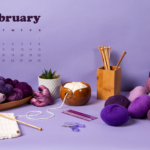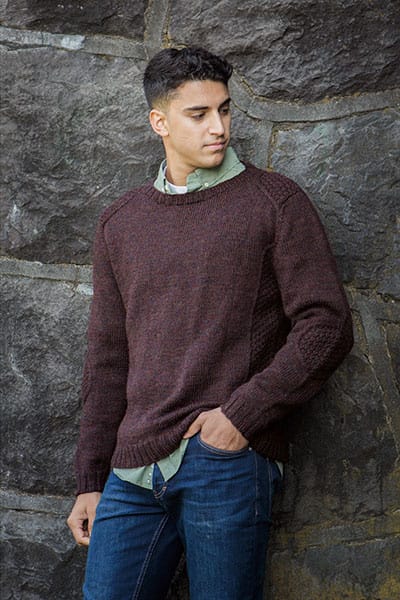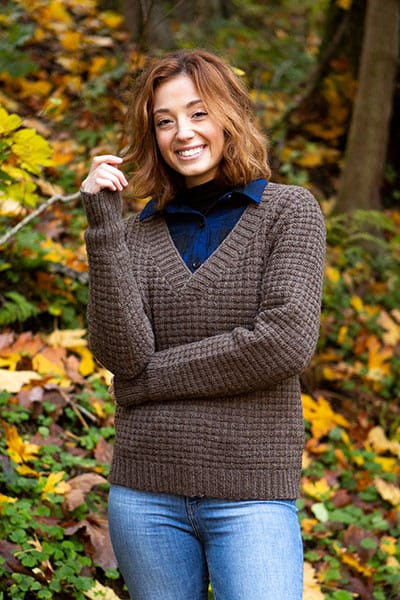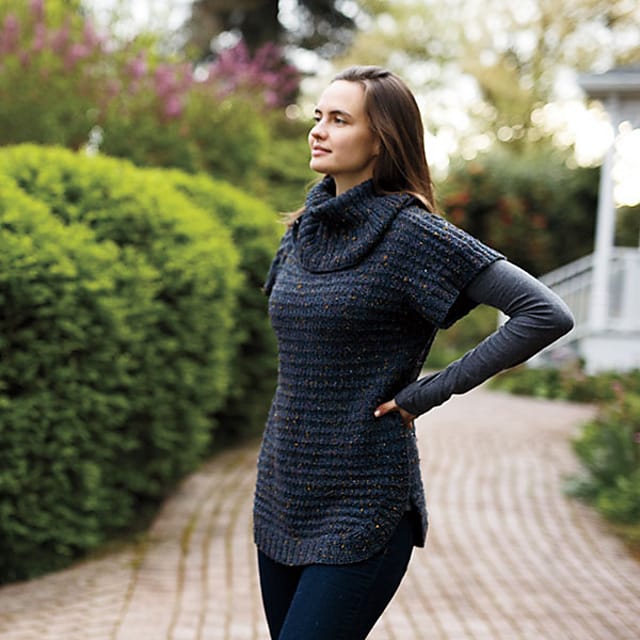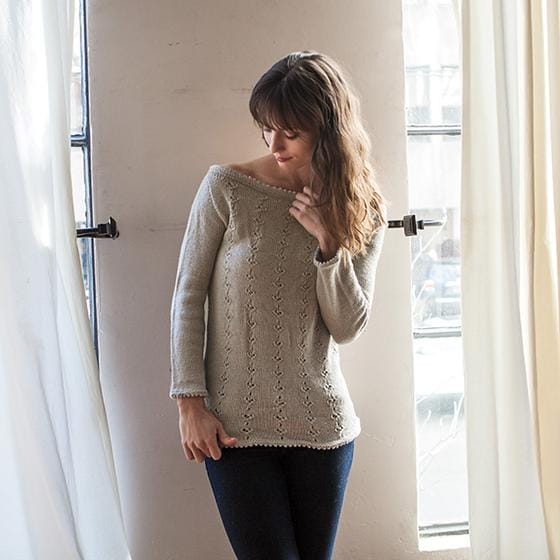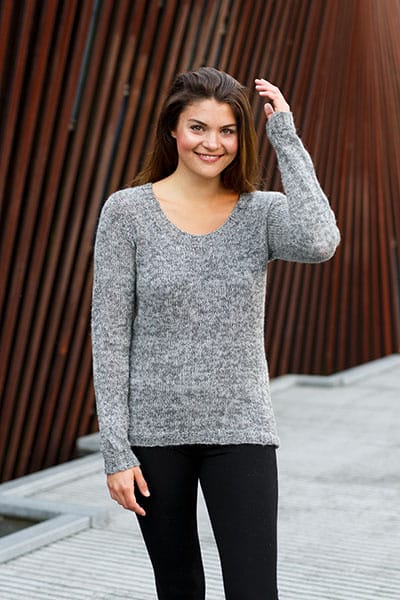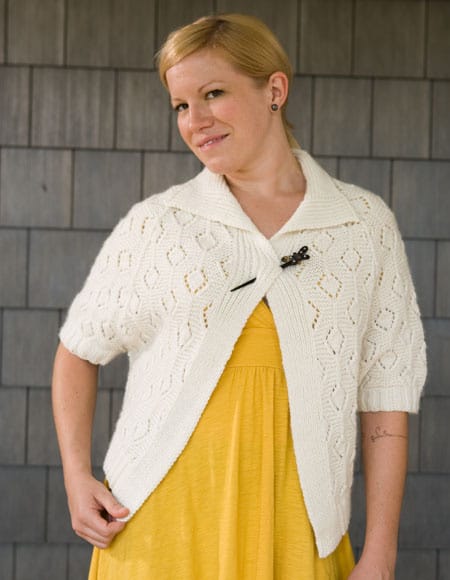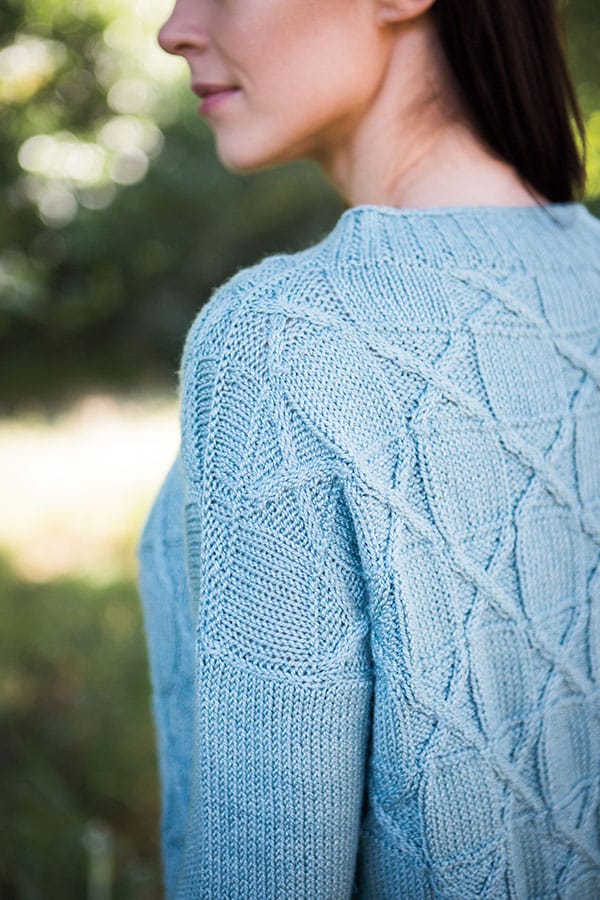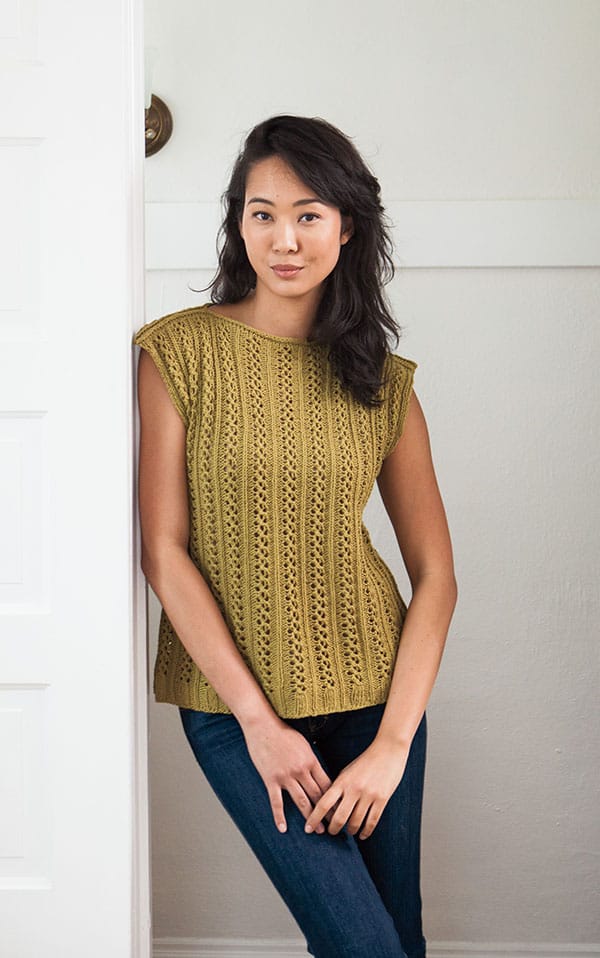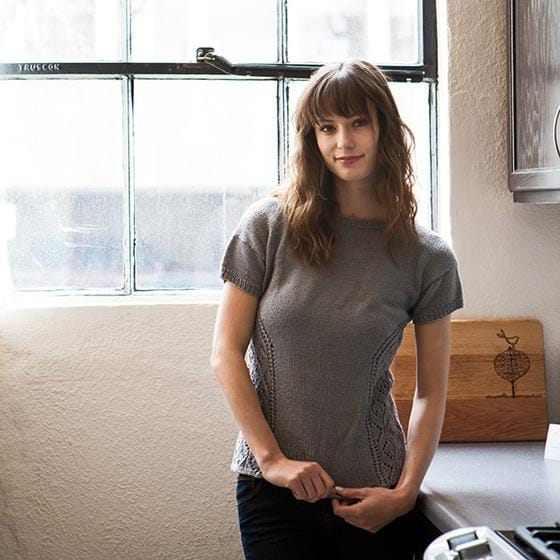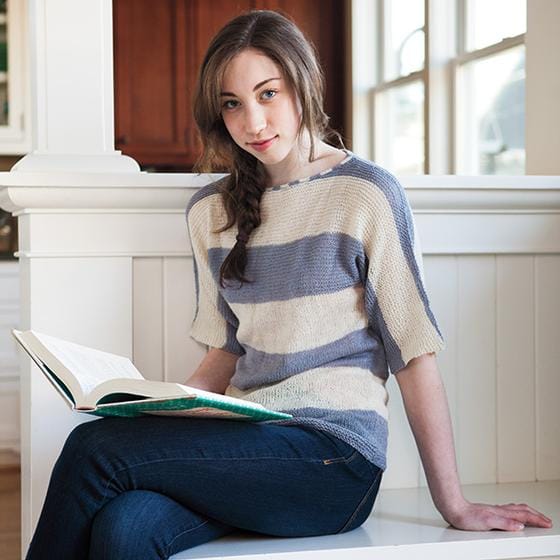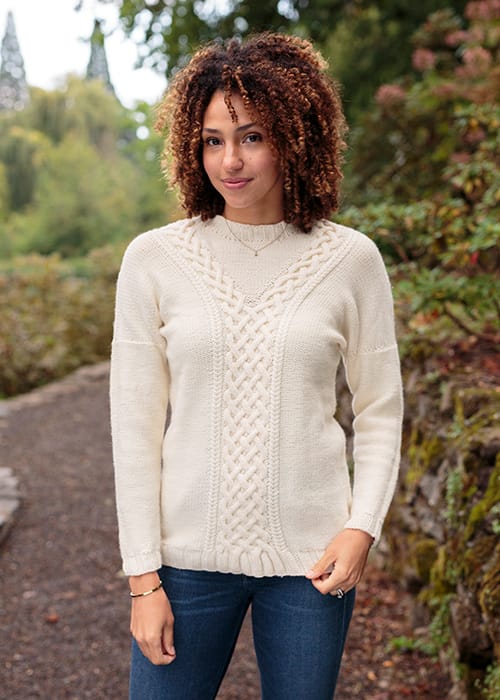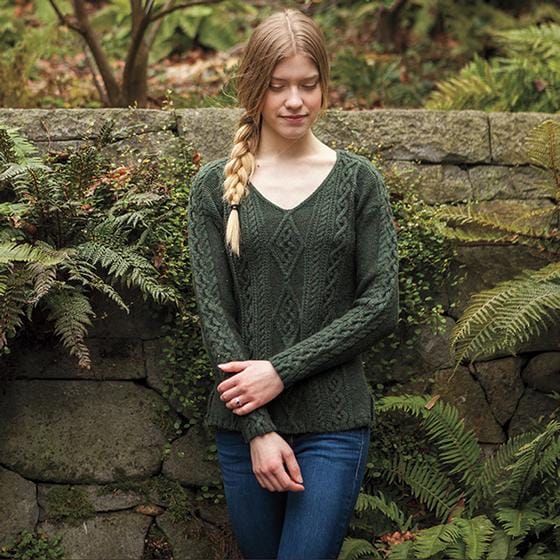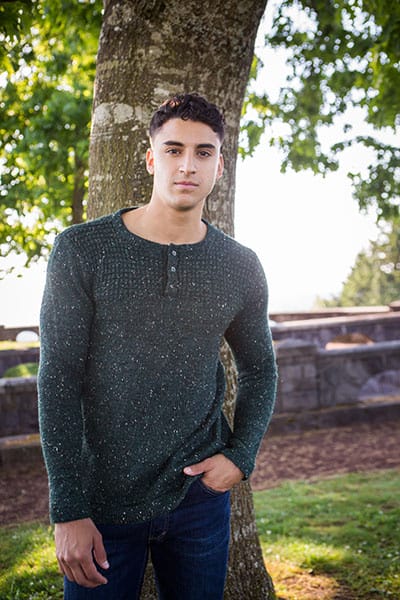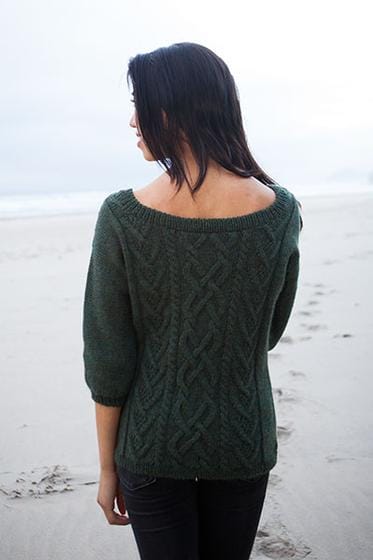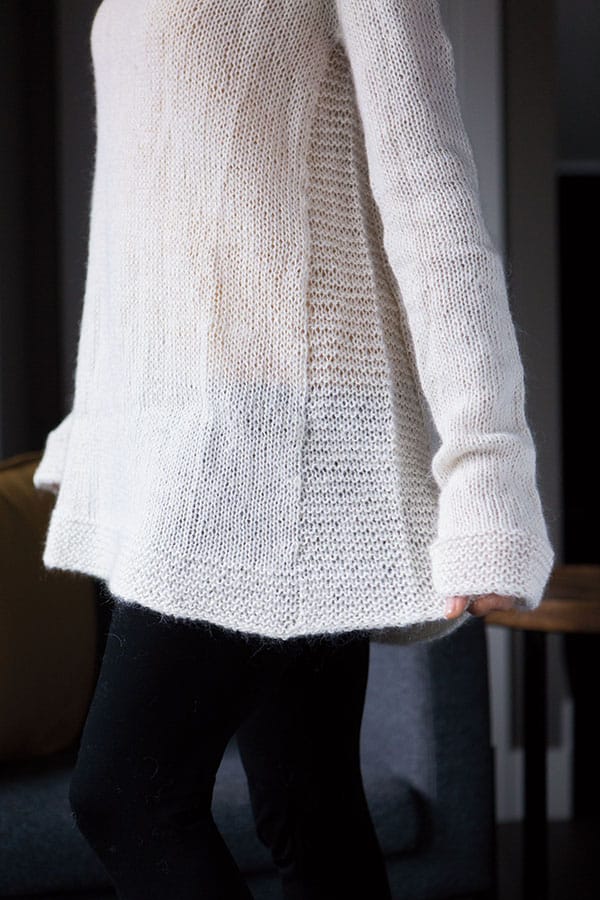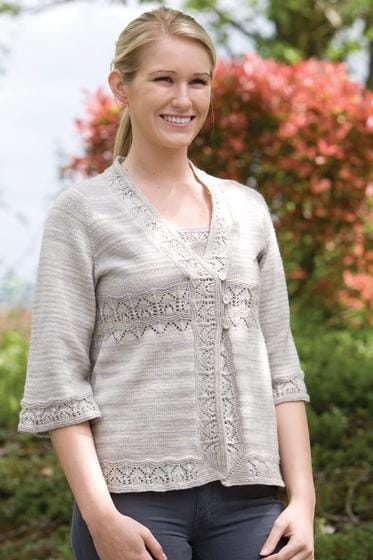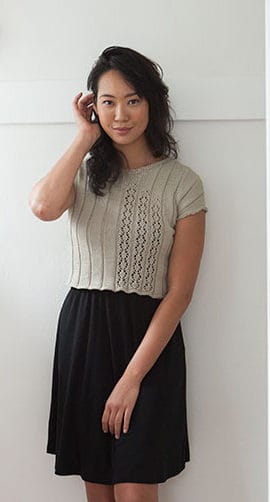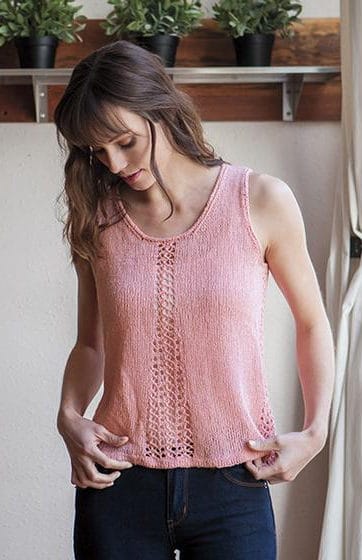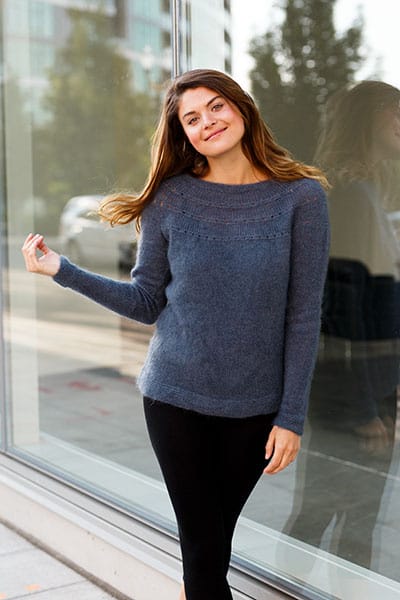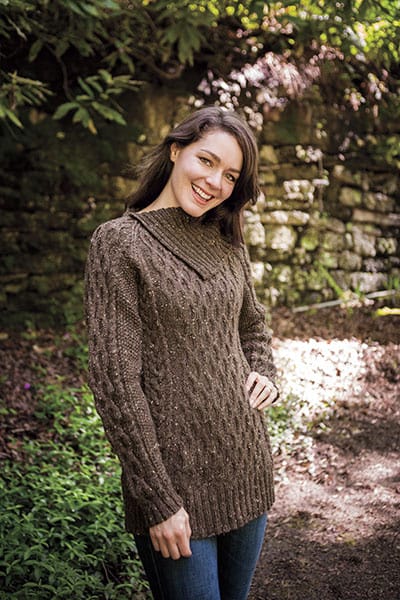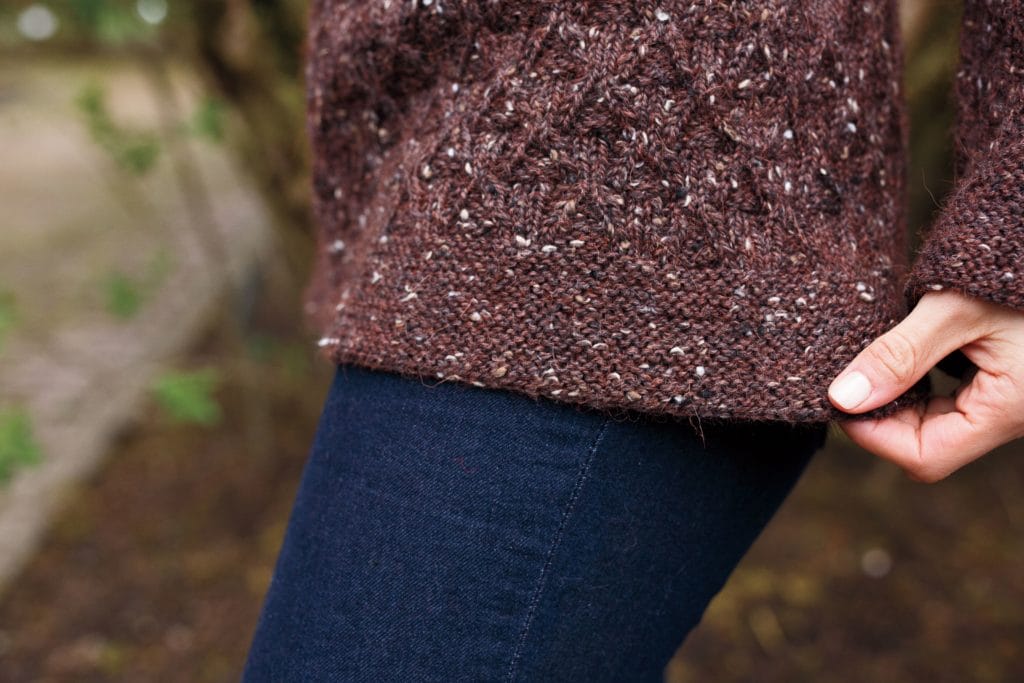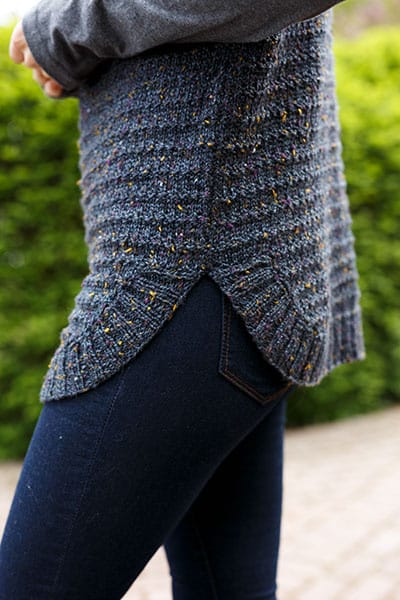Does looking for your next sweater pattern leave you confused by all the terms casually thrown around? Raglan, saddle shoulder, empire waist … all of these design elements have their pros & cons, but if you are new to sweater construction, it can be a little overwhelming. We’re here to break down several of the most popular terms to help you find that perfect project!
To start, the term sweater can refer to both pullovers and cardigans. As the name suggests, pullovers are pulled on over the head whereas cardigans usually feature some sort of full front closure (buttons, zippers, etc.) so that they can be worn opened or closed.
This is a pullover:
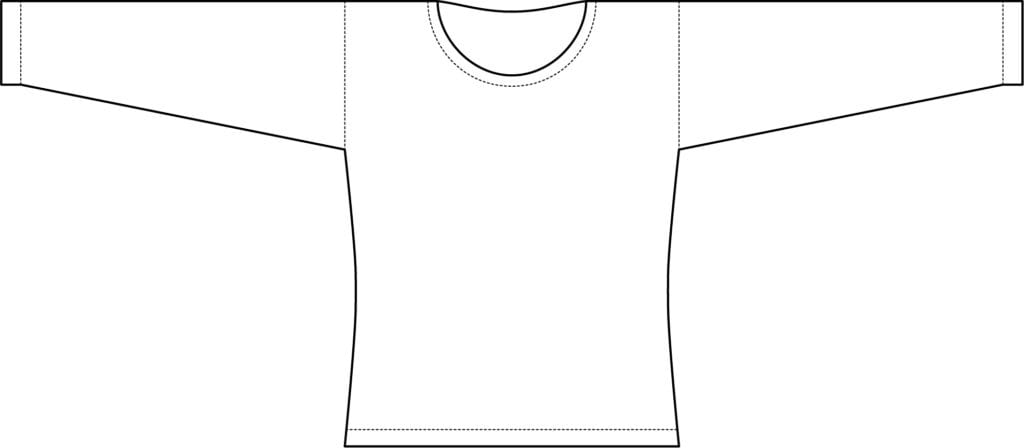
This is a cardigan:
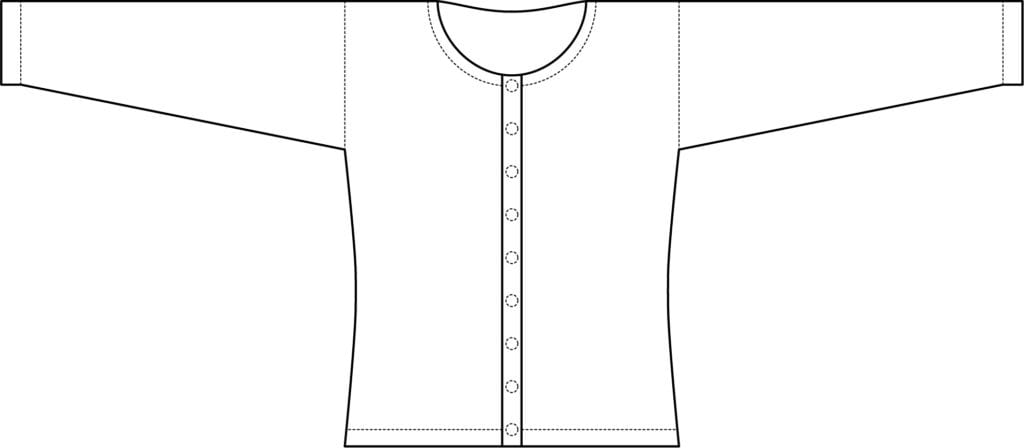
Most of the terms we’ll be discussing can be used in either pullovers or cardigans. Here’s a quick review of the areas we’ll be covering:

Let’s start at the top with the neck/collar. There are many different collar styles for sweaters; here’s a look at some of the most popular ones.
(click on each photo to see a larger version)
- Crew neck This is a round neck worn close to the neck. You’ll see this frequently in ready-to-wear sweatshirts, for instance. Ribbing is frequently used for a fitted, stretchy opening.
- V-neck The neckline features a pronounced “v” shape in the front. Ribbing may also be used to keep the crisp, flat shape over time.
- Rolled neck This opening typically sits higher than the first two and features a tightly rolled edge. Ribbing is not used; instead, the neck curls naturally from stockinette stitch.
- Turtle neck/mock turtle neck (or polo neck in the UK) This is a tall, extended tube that can be worn folded over or rolled. Typically knit in either ribbing or stockinette, turtle necks are generally form-fitting for a sporty silhouette. A mock turtle neck is a shorter version (extending to halfway up the neck) and is worn unfolded.
- Cowl neck This is similar to a turtle neck but is not close-fitting; instead, it drapes loosely around the neck. This typically features simple stockinette stitches or loose over-sized ribbing.
- Boat neck This is a wide neckline, generally running from shoulder to shoulder. It is typically created by sewing two squared off back and front sweater pieces together and finishing with a narrow band.
- Scoop neck This is a rounded neck that dips past the collarbones.
- Henley This is a round neckline as well, but it characterized by having a small placket below it with 2-5 buttons, which can be functional or decorative, depending on the pattern.
Patterns shown above: 1. Rockland Sweater, 2. Wembly Sweater, 3. Bargeman, 4. Light Basics Pullover, 5. Hinterland Sweater, 6. Heartbeat Sweater, 7. Theya Pullover, 8. Georgetown Henley
Next, we’ll tackle the upper body and shoulder terms:
(click on each photo to see a larger version)
- Circular yoke This is a style of sweater where the upper body is worked in the round in one piece and incorporates the neck and sleeves seamlessly. It’s typically used in colorwork or cable patterns.
- Set-In sleeves This is a sleeve that is knit separate from the sweater body and sewn after each piece is blocked to the body of a garment starting at the edge of the shoulder and continuing around the armhole.
- Raglan This is a sleeve that can either be knit separately and seamed or, more typically, knit seamlessly. Decreases or increases form a diagonal seam from underarm to collarbone. Raglan sleeves are forgiving to fit and wear, with fewer seams and less structure around the upper arm.
- Saddle shoulder This is a sleeve with a narrow strip of knitting from the neckline to the top of the shoulder. It can be seamless or knit in pieces and seamed together. Treated as a design feature, this sleeve style also accommodates broad shoulders for a fitted sweater.
- Dolman sleeve Set into relaxed fit sweaters, Dolman sleeves feature a sloping curve from sweater hem to sleeve cuff and are usually knit in one piece with the sweater body.
- Drop shoulder This is a shoulder treatment with no armhole shaping; usually, it is a squared-off sleeve connected to a squared-off body. The simple shapes make seaming drop shoulder sweaters easy and are most commonly used with sweaters that have a relaxed fit in the body and tighter fitting sleeves.
Patterns shown above: 1. Lewisburg Pullover, 2. Boyfriend Cardigan, 3. Harley Pullover, 4. Lansbury Cardigan, 5. Eastbank Capelet, 6. Game Theory
Next is sleeve lengths:

1 
2 
3 
4 
5 
6
(click on each photo to see a larger version)
- Sleeveless As indicated, these sweaters end at the shoulder.
- Short/Capped These end usually around mid-bicep, similar to typical T-shirt length.
- Elbow These end at the elbow or just above or just below.
- 3/4 length These end between the elbow and wrist bone.
- Bracelet These end at the wrist or just above it.
- Long These end below the wrist.
Patterns shown above: 1. Cloverleaf Top, 2. Cabri Shell, 3. Nautical Pullover, 4. Chilla, 5. Parting of the Ways Pullover, 6. Rhiannon
Next is the waist:
(click on each photo to see a larger version)
- No shaping This refers to no increases or decreases throughout the body to define the waist. They’re generally loose-fitting and are a typical feature of men’s and children’s sweaters.
- Waist shaping This general term is used to refer to even increases and decreases through the body to define the waist, typically on women’s sweaters. The stitch count before and after the increases and decreases are the same or close. Sweaters with waist shaping are usually more close-fitting than those without waist shaping.
- A-Line A variation of general waist shaping, increases/decreases continue in one direction and are not mirrored, creating flared fabric below the waist.
- Empire waist The shaping occurs much higher in the garment, starting under the bust and either flare to an A-Line shaping or is knit straight for a relaxed fit continuing down to the hip.
Patterns shown above: 1. Breckin Pullover, 2. Dun Laoghaire Pullover, 3. Aamu, 4. Cecily Twinset
A quick brief on sweater lengths:

1 
2 
3 
4
(click on each photo to see a larger version)
- Cropped The sweater ends above the waist.
- High hip The sweater ends at the top of the hip.
- Mid-hip The sweater ends in the middle of the hip or just below it.
- Tunic Typically, these sweaters end mid-thigh but can end anywhere past the hips to the knees.
Patterns shown above: 1. Sprouts Tee, 2. Jolinda Tank, 3. Timeless Pullover, 4. Contour Tunic
Finally the bottom of the sweater – hems or cuffs:
(click on each photo to see a larger version)
- Ribbed hem Probably the most popular hem for sweaters, this is simple ribbing at the bottom of the sweater. It can be any number of rib variations and range in length from 1 inch to several inches. Ribbing creates an elastic hem that lays flat.
- Garter hem Features garter stitch in place of ribbing to create a band. Less elastic than ribbing, garter stitch hems are ideal for a relaxed finish.
- Folded: The bottom of the sweater is extended, usually by an inch or two, and folded up and seamed. Typically there is a “turning” row of purl stitches to create a crisp, straight edge.
- Split hem As the name suggests, there is a split in the hem. Frequently, the stitches around the split are picked up and knit using a rib or garter hem.
Patterns shown up: 1. Gray Day Gansey, 2. Cozy Sweater, 3. Knots & Chains Pullover, 4. Hinterland Sweater
There you have it! Of course, it would be impossible to capture all the unique styles designers add to their patterns, but we hope this gives you a good overview. Have a question about a particular sweater term? Ask away in the comments!


